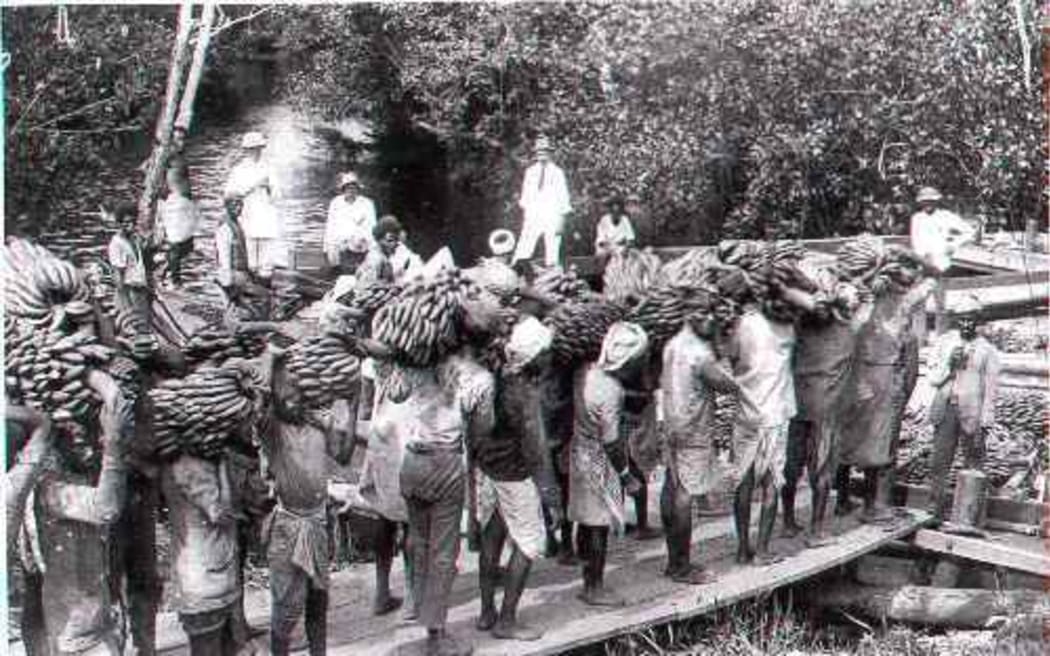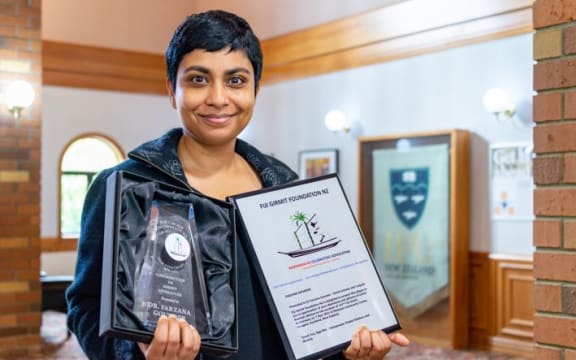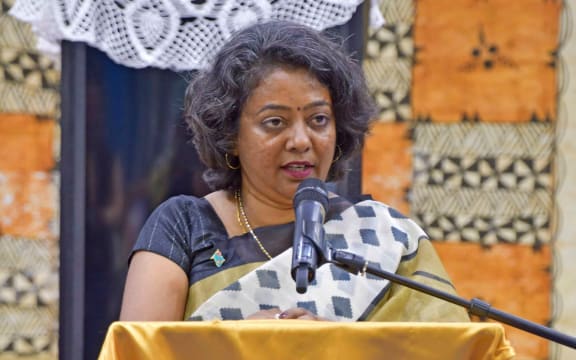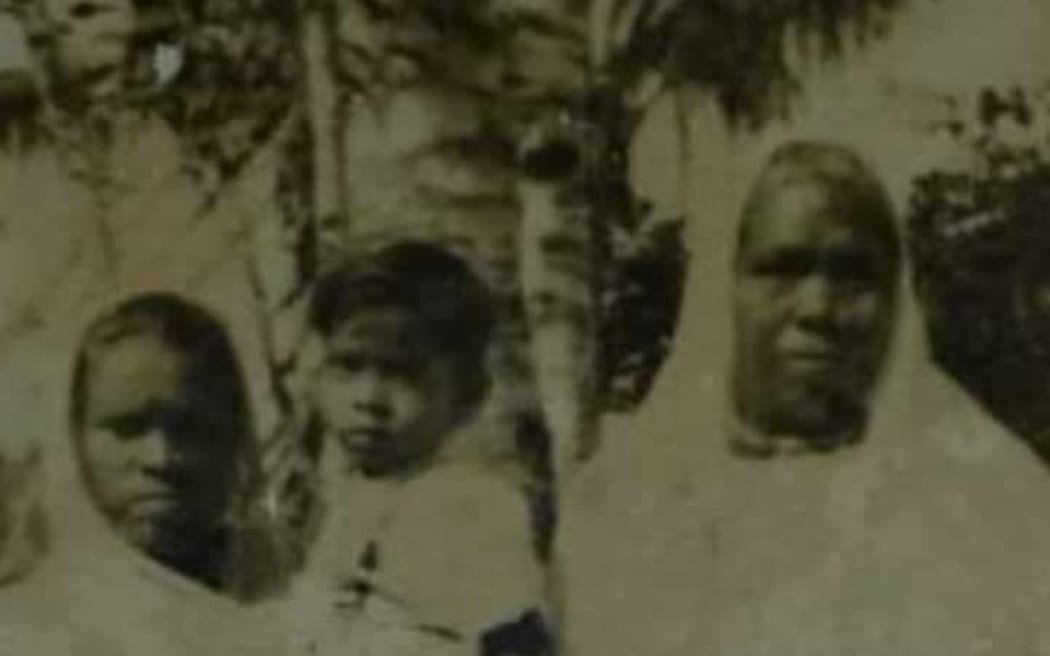By Rachael Nath, RNZ Pacific journalist
In a significant step toward preserving and commemorating Fiji’s rich history, efforts are underway to establish the country’s first living museum.
This unique institution will focus on capturing the era of the British colonial government’s indentured system in Fiji, shedding light on the arrival of Fijians of Indian descent to the Pacific Ocean.
The initiative aims to honour the contributions and struggles of the indentured labourers, known as Girmitiyas, who played a pivotal role in shaping Fiji’s economy.
Behind the vision is the Global Girmit Institute, whose board of trustees chair Dr Ganesh Chand told RNZ Pacific the museum had great significance for Fiji.
Dr Chand said that many Fijians were unaware of their country’s history and the way of life under British rule in Fiji, noting that Fiji-Indians were even unaware of their origins — the Girmitiyas.
Fijian-Indians make up about 37 percent of the country’s population.
“For Girmitiyas, there has been a total silence of material in our curriculum all the way up to now,” Dr Chand lamented.
“There is nothing in the texts, and students don’t learn their history.”
He said that if schools fail to teach local history, it could be detrimental to that nation as a whole.
“If they don’t learn in these in schools, then they grow up thinking that their house and day-to-day life is their entirety in the country.

“But that is not a very good state for nation-building. For nation-building, people need to know the history,” Dr Chand said.
The museum aims to rectify this by providing a “comprehensive and immersive experience” that educates visitors about the Girmit era.
The Global Girmit Institute living museum will be co-located within the GGI Library at its headquarters in Saweni, Lautoka, on the country’s main island.
Work has already begun, with the collection of artefacts intensifying in preparation for the anticipated opening of phase one next year.
Travellers who crossed two oceans
The gallery will feature a range of artefacts and recordings of the oral history of people from different linguistic backgrounds and cultures.
Objects relating to farming and the sugar industry, lifestyle, music, food, clothing and religious events will also be displayed, along with objects that record the impact of colonialism on the islands.
Dr Chand said visitors will have the opportunity to witness and understand first hand the living conditions and lifestyle of the Girmitiyas.
“The living museum will feature a fully furnished residence from the era, and our workers will live there and depict how life was in those days under British rule,” he said.
So, how did a group of South Asian people — the Girmitiyas — arrive in the Pacific Ocean?
It was the abolition of slave labour in the early 19th century that gave rise to the Indian indenture system.

This saw an influx of labourers transported from India to various European colonies, including Fiji, to work in plantations.
The system was established to address the labour shortage that followed, explained academic and linguist Dr Farzana Gounder, a direct Girmitiya descendant and a representative of Fiji on the UNESCO International Indentured Labour Route Project.
“The term ‘Girmit’ is derived from the word ‘agreement’ and was used to refer to the system of indentured labour that brought Indians to Fiji between 1879 and 1916,” she said.
“Under this system, Indian labourers were recruited from British India to work on sugar plantations in Fiji, which was then a British colony. During this period, more than 60,000 Indians were brought to Fiji under indenture and became known as Girmitiyas.”
The indenture was seen as an agreement between the workers and the British government, and over the next three decades Girmitiyas were shipped across two oceans to work the lands in Fiji, where a jarring reality awaited them, explained Dr Gounder.
“The Girmitiyas faced many challenges when they arrived in Fiji, including harsh working conditions, cultural and linguistic barriers, and discrimination from both European and indigenous Fijian populations.
“They worked long hours in difficult and often dangerous conditions on the sugar plantations and were paid very low wages.”
The Girmitiyas were instrumental in the development of Fiji’s sugar industry, and this museum aims to tell these stories.
Fiji’s Peace Village to host historical stories
The government of Fiji is also commissioning a living museum in the central province of Navilaca village in Rewa.
Assistant Women’s Minister Sashi Kiran announced that this gallery would pay homage to the relationship between the Girmitiyas and iTaukei people.
“Navilaca village is significant to the history of both the indigenous people and the Indo-Fijians,” she said.

Kiran recounts the heroic efforts of the indigenous people in 1884 who, in the absence of immediate assistance from the colonial authorities, led the rescue operations, saving many lives when a ship named Syria, carrying around 500 Girmitiyas, became wrecked on the Nasilai Reef.
This village thus served as an apt location for the museum, paying homage to the resilience and humanity displayed during that challenging time, she said.
“The village of Navilaca had done the rescue when the Syria was wrecked, and villages there had not only rescued the people but buried the dead in their chiefly ground. They had also looked after all the injured until they healed.
“The fisherfolk had been rescuing people, and the archives also say that there were only about 100 out of almost 500 passengers left by the time the colonials came, so most of the rescue was actually done by the indigenous people.”
The village has since been declared a place of peace with an offer extended to host teaching of each other’s rituals, ceremonies, and customs.
“It will be a space where both cultures can be taught through artefacts and storytelling,” she added.
It will also be open to tourists and the diaspora.
Both living museums promise to be vital cultural institutions, providing a platform to remember and honour Fiji’s history.
This article is republished under a community partnership agreement with RNZ.

This post was originally published on Asia Pacific Report.